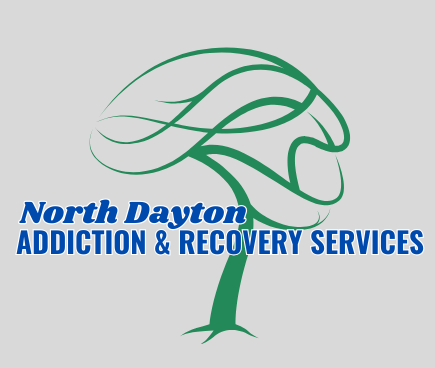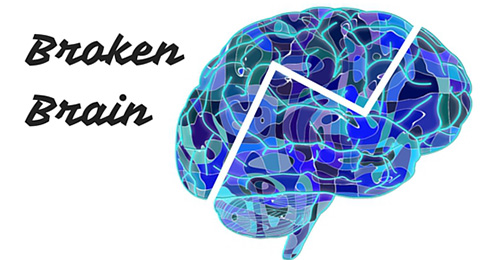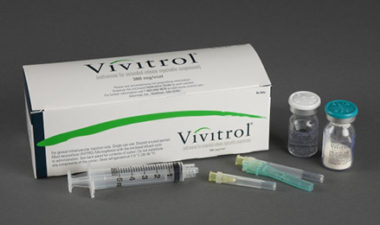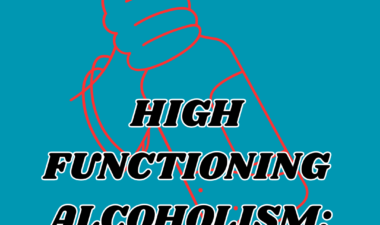Patients and family members alike rarely understand what happens to the brain once becoming dependent on, then addicted, to opiates and heroin. The excerpt below is from Avoid Broken Brain Syndrome by John P. Moore, III. He explains how the functioning of your brain changes during opiate use and what you’re left with once you stop using.
Excerpt From Avoid Broken Brain Syndrome
“…Use of opioids starts significant changes in your brain’s own opioid production factory from your very earliest use. We have a factory in our brain that produces our endorphins (opioid or morphine type compounds). Let’s say that factory has five assembly lines making the endorphins. When the brain senses there is an excess of pain killers or heroin floating around in the blood stream of someone ingesting pain killers or heroin, it shuts down a few of the assembly lines to conserve effort. Now it differs for everyone, but with prolonged period of use or increasing daily intake of opioids – those shut down assembly lines go into disrepair – the bearings and gears rust up, the conveyer belts tatter, control panel switches go bad, etc. Now, if suddenly you, as an opioid user, can not get more meds from a doctor or opioid drugs off the “street”, you suffer the severe consequences of these shut down assembly lines or what can be called a ‘Broken Brain.'”
Symptoms
“You will feel every ache or pain our creator never intended us to feel. This is known as opioid withdrawal, and though it’s not life-threatening, for most, it makes you feel like you’re going to die. Withdrawal symptoms are described as similar to a horrible flu that won’t go away. In addition, this Broke Brain Syndrome means you will suffer tremendous loss of energy and depression, when you do not have pain killers or heroin to take.
Our creator designed opioids to function so importantly and in a number of ways for our brain and body’s normal functioning. When some of these assembly lines are shut down, your brain will be scrambling to get those shut down assembly lines back on line after you’ve lost your supply. It can take several very excruciating days to weeks. Then, you may find that perhaps there were not enough spare parts to get the last assembly line up and running. We find its going to need a major overhaul – parts are back-ordered and have to be newly machined. It’ll take months for the brain to get those assembly lines repaired. In that period, you’ll semi-functional. You won’t feel well, you won’t be yourself, you may be fairly depressed, you may isolate, maybe lash out at those around you. Or, worse, you’ll go back to using opioids and begin a cycle of further damaging your brain. By the way, my patients tell me and research backs of the fact that it gets worse each time you go back to using.”
You’re Not You Anymore
“Broken Brain Syndrome can end up consuming you. I often discuss with my patients the phenomena that their mind is constantly planning and plotting how to obtain their next opioid dose. They agree, and family members concur, that though you may be sitting on the couch of your family den, with family members all around, you are not really there. Your mind is totally occupied with evaluating how your head is feeling, which is likely to be ranging from withdrawals and sick to being high and euphoric. You’ll be plotting as to where the next supply would come from. You might even be waiting for your family member to look the other way so you can lift that twenty dollar bill you saw them put in their wallet. The more your brain breaks, the more you’re taking pain killers or heroin just to not be sick. One day, the acquaintance you usually buy pain pills from doesn’t have any more and someone offers you a capsule of a white powder and promises you it’ll work better and is cheaper. They might even tell you it works even better if you snort it (breath it in through your nostrils). You find you do get a better high by snorting, for a few months anyway, and then someone offers to help you inject it to get the same high you got when you first snorted. Now, you’re among the unfortunate who never saw themselves becoming an intravenous heroin user – but, you’re not you anymore because you’ve broken your brain.
So, if you’re that high school student who’s feeling invincible and experimenting with drugs, beware of getting into the use of pain killers to get high. Its not that getting hooked on tobacco, alcohol, downers (Xanax, Valium, Klonopin) or uppers (Adderall, methamphetamines, or cocaine) don’t have their own mechanism of breaking your brain, killing you accidentally, or robbing you of life success – it’s just that the opioid system is such a fragile, critical, complex, and amazing gift from our creator that its the one brain system you never want to damage. Breaking your opioid or endorphin factory usually leads to a sure downward spiral leaving you three options. Those options are death, prison, or institutions. I send out the same warning for adults who found you liked the buzz or energizing effects you found when your doctor, dentist, or emergency room doctor prescribed you pain killers for an injury or painful condition and begin manipulating and creative drug acquisition behavior in your escalation of opioid use. A special warning should also go out to factory, construction, and trade-workers where the passing around of pain killers with the idea it’ll help you power through your work shift is epidemic.”
A Trap
“Breaking your brain with opioids is a trap akin to running up a credit card balance. You abuse opioids and pain killers making yourself superhuman; but, you’re stuck with a huge debt where you’ll have to live sick, depressed, unable to get out of bed and generally subhuman as you are forced to repay that debt.
There is a famous song by the Bee Gees, “How do you mend a broken heart? How do you keep the rain from falling down?, How do you stop the sun from shining?, what makes the world go round?…….” This song comes to mind with brain substituted for heart –“ How do you mend a Broken Brain?” as I ponder the emotions, passions, and challenges I share with my patients caught over the catastrophic syndrome of opioid induced Broke Brain Syndrome.”
Repair Programs
“Fortunately, if you’ve already ended up with a Broken Brain – a broken endorphin factory, there are some well established repair programs. Two opioid replacement approaches are available. Both approaches rely on long-acting opioid medications that buildup to a steady concentration over a few days and protect you from withdrawal sickness for several days if you were to run out of a supply of the replacement medication. As well, these two opioid medications block the effect of shorter acting opioids like heroin or oxycodone and, thus, curb abuse of these medications. Patients with “Broken Brain Syndrome” are placed on either methadone or buprenorphine (Suboxone) in clinics that are highly regulated by the Drug Enforcement Agency. After a period of time, these substitute medications are slowly weaned as the brain’s opioid factory slowly and steadily repairs. Methadone clinics were the first replacement clinics where risk of overdose and diversion to the community means clinic patients must travel to the clinic each day to have a day’s dose administered to them. Now, I tell you that’s something to think about before travelling down the path of breaking your brain with opioids. The Suboxone clinics, legislated into existence in 2005, require Broken Brain patients to visit the clinic only every few weeks to monthly. This is allowed due to the inherent safety of the Suboxone medication. Additionally, Suboxone is different than methadone in that the “buzz” or “high” effect is absent when taking Suboxone. Broken Brain patients have gone to calling Suboxone “The Miracle Pill”, because it immediately takes them off the roller coaster ride of going from superhuman to subhuman when abusing or suffering dependence on opioids. When prescribed Suboxone, they are suddenly free of the severe ups and downs and they are no longer “high”. They are not in withdrawal pain, depressed, or in withdrawal fatigue. With Methadone, the average patient will be maintained on replacement therapy for nearly 3 years versus Suboxone maintenance averaging more like 1 year before approaching final weaning schedule.
Broken Brain patients do best when involved in a multifaceted approach to achieve healing. Hanging out with other Broken Brain individuals involved in twelve step programs like Narcotic Anonymous or Alcoholics Anonymous has proven tremendously helpful. Broken Brain patients learn and build multiple tools to help them avoid falling back into the trap of breaking their brain with opioid abuse. The vacuum left as their Broken Brain patient leaves the life of hours per day searching for his/her next dose or zoned out high is filled with time spent in building a spiritual life, learning, and helping others. Counseling and education on the Broken Brain disease process has proven to be another significant life preserving and brain repair technique. You’ll want to get all the help you can determining new ways to cope with life other than altering consciousness and breaking your brain with opioids.”
It’s a Pain
“We now know that critical hormone levels drop in our body’s from our first use of opioids. Somehow, the excess opioids slow production of the hormones coming from our brains that tell our ovaries, testicles, and adrenal glands to produce hormones that keep our body’s repair mechanisms switched on, maintain normal mood, and keep energy levels up. Vitamins will assist in normal mood and support your hormone system. Its amazing, but patients placed on pain killers end up with their hormones lowered to the point that their bodies won’t build and repair muscle well, thus, helping trap them in a worsening pain syndrome. Its been proven that the significant drop in testosterone in both men and women on opioid pain killers allows amplification of pain sensations from spinal chord mechanisms – possibly leading to the desire for more pain killers and leading to a further downward spiral and breaking of the brain.
Place yourself on a quality multivitamin and two thousand milligrams of Omega 3 oils(fish oils). Do the same even if you are utilizing twelve step programs only in order to recover from opioid abuse and dependency and not on opioid replacement therapy. The right diet and exercise regimen will also help your brain repair. Avoid high sugar and highly caffeinated drinks. You might want to avoid Mt. Dew as we have found that sixty plus percent of our opioid addicts consume three or more of this popular soda pop per day. This behavior observed in our clinic patients match research suggesting high caffeine and sugar laden drinks are associated with opiod use and relapse to opioid abuse…”
We Can Help
At North Dayton Addiction & Recovery, a program consisting of medication and chemical dependency counseling is utilized to provide the patient’s brain time to heal. We also teach new coping mechanisms and relapse prevention techniques while addressing the underlying issues that may have sparked the addiction to begin with. Call 937-416-5442 to learn more about the programs we provide. We can help.




